Pavillon de Hanbyeokdang (한벽당)
6.8Km 2024-04-07
2, Girin-daero, Wansan-gu, Jeonju-si, Région Jeonbuk
+82-63-281-2166
Le Pavillon de Hanbyeokdang, situé dans la province du Jeollabuk-do, a été désigné propriété culturelle réelle No. 15. En 1404 lors du royaume de Joseon, un haut-fonctionnaire avait construit cette demeure comme résidence secondaire. Elle se trouve au pied du Mont Seungamsan donnant sur le splendide panorama du fleuve Jeonjucheon. Malheureusement, une autoroute a été créée dans les environs depuis, et la beauté du paysage en a souffert. Dans le passé, nombre d’écrivains étaient à la recherche du Pavillon de Hanbyeokdang afin de donner substance à leur inspiration. Ce dernier est aussi connu pour la beauté de la montagne qui l’entoure, ses brumes flottant au loin. C’est ainsi un des 8 lieux à voir absolument à Jeonju.
Hotel Sol / 솔호텔
6.8Km 2025-08-13
22-4, Ajung 2-gil, Deokjin-gu, Jeonju-si, Région Jeonbuk
+82-63-261-7000
This hotel is located 5 min from Jeonju Station by car. The exterior of the hotel is furnished with a chic grey decor, and there is a wide parking lot for the guests. There are 11 room types in total, all equipped with 50-inch smart TV and sofa, and whirlpool bathtubs with the exception of the Standard Double Room and Standard Double Circular Room. Latex beds ensure the comfort of the guests. Hotel Sol is dedicated to offering a restful stay in green nature. Terrace Spa Garden Room and Terrace Spa VIP Room, in particular, offer a comfortable garden furnished on the terrace, a space furnished with whirlpool spa and rattan furniture in a grass lawn surrounded by a screen of bamboo trees. Jeonju Hanok Rail Bike is reachable in 8 min by foot, while Jeonju Hanok Village can be reached by car in 7 min. Its location near Dongbu-daero gives it great access to Jeonju’s outskirts as well.
Route Baramsseoneun-gil (바람쐬는길)
6.9Km 2024-04-08
21, Baramsseoneun-gil, Wansan-gu, Jeonju-si, Région Jeonbuk
La route Baramsseoneun-gil désigne la route entre Jeonju Eco Museum et le tunnel Hanbyeok. Le nom de la route provient du ventqui souffle le long de la route, faisant de l'endroit un endroit conseillé pour les promenades.
La route a également été choisie par le KTO comme l'un des meilleurs chemins à parcourir avec son animal de compagnie. On trouve aussi une station de prêt de vélo situé le long du chemin. Le tunnel Hanbyeok est connu en tant que lieu de tournage du drama "Twenty-five Twenty-one (2022)".
Petit supermarché Ahyeon (아현슈퍼)
7.0Km 2025-03-15
854-7, Dongseohak-dong, Wansan-gu, Jeonju-si, Jeonbuk
Le lieu est réputé comme set de tournage notamment pour son ambiance type année 1990.
Vélo-rail du village hanok de Jeonju (전주한옥레일바이크)
7.1Km 2024-04-08
420, Dongbu-daero, Deokjin-gu, Jeonju-si, Région Jeonbuk
+82-63-273-7788
Le vélo-rail du village hanok de Jeonju permet de profiter des joies du vélo sur une voie de chemin de fer. Il se situe près du village hanok de Jeonju fréquenté par environ 1 000 personnes par an, aux alentours de la ligne fermée de la gare de Ajung. De Silli à Oemangsil (3,4km), le vélo peut circuler à une vitesse moyenne de 15-20 km/h.
Lac Ajung (아중호수)
7.1Km 2024-07-09
1111-5, Uadong 1ga, Deokjin-gu, Jeonju-si, Jeonbuk
Le lac Ajung désigne un large réservoir qui fut construit pour aider les productions agricoles locales avant de devenir un lieu de villégiature pour les résidents. Le lac abrite des chemins de promenade aménagés réputés notamment en soirée.
Temple Donggosa (동고사)
7.4Km 2024-04-07
San 10, Gyo-dong, Wansan-gu, Jeonju-si, Région Jeonbuk
+82-63-288-1626
Le temple Donggosa est un temple bouddhiste de l’ordre Taego, situé sur le mont Seungamsan à Gyo-dong, dans la ville de Jeonju, au sein de la région du Jeollabuk-do. La randonnée jusqu’au temple est une expérience rafraîchissante, de par l’air frais environnant et de la vue panoramique sur le centre de Jeonju depuis le temple. Les bâtisses furent construites les unes après les autres le long de la crête et sont alignées avec Daeungjeon, le bâtiment principal situé au milieu.
Le temple Donggosa est de petite taille mais fut merveilleusement décoré avec des portraits de grands moines bouddhistes défunts et des peintures bouddhistes murales réalisées sur du bois. Le chemin de randonnée à la droite du temple Donggosa mène au domaine des martyrs de Chimyeongjasan, qui accueille les tombes de nombreux catholiques, persécutés pendant la période tardive de la dynastie Joseon.
Montagne des Martyrs (Chimyeongjasan) (천주교성지 치명자산)
7.5Km 2024-04-07
103-88, Naksujeong2(i)-gil, Wansan-gu, Jeonju-si, Région Jeonbuk
+82-63-285-5755
La montagne des martyrs est l’oeuvre des catholiques persecutés de Jeonju au 18ème siècle. De nombreux martyrs y sont enterrés y compris un couple marié qui fit le voeu de rester vierge pour l’éternité. Le mari de ce fameux couple est Lee Jong-cheol, son père, un autre martyr décida qu’il devait se marier mais rester pieux et pure.
Ce sont sept personnes de sa famille qui reposent dans ce cimetière. Il existe aussi un chemin de croix et une cathédrale.
Espace culturel Nu-e (복합문화지구 누에)
8.3Km 2024-04-08
462-9, Wanju-ro, Wanju-gun, Région Jeonbuk
Nu-e désigne un complexe culturel situé à Wanju-gun dans la région de Jeollabuk-do, inauguré sous le thème de "un espace de vie où chacun communique à travers l'art". En tant que projet de restructuration culturelle, il a été décidé de construire le site dans la région de Jeollabuk-do Jameop (silkworm business) avec notamment différents programmes culturels et éducatifs. Parmi les différentes structures, on compte le 'Nu-e Art Hall' proposant différentes expositions et spectacles mais aussi une guesthouse dénommée 'Sum', un espace de camping, des espaces ateliers, etc. Le site propose aussi l'espace "Dreaming Nu-e Playground" pour les enfants.
Il est aussi recommandé de visiter le 'Jeonbuk Provincial Museum of Art' et le 'Samnye Culture and Art Village', de grands sites touristiques à Wanju-gun.
Sejonggwan of the Royal Room / 왕의지밀 세종관
8.7Km 2025-08-12
5218-22, Chunhyang-ro, Wansan-gu, Jeonju-si, Région Jeonbuk
+82-63-284-1004
This hanok (traditional Korean house) hotel is located near Jeonju Hanok Village. The hotel has enjoyed great popularity among the tourists visiting Jeonju since its opening in 2018, for its convenient location of only a 7-min drive away from Jeonju Hanok Village and its faithful recreation of hanok’s beauty with modern sensibilities. The hotel complex stands on a plot of land spanning 19,840 m2, containing 11 residential buildings and other facilities. As the name of the hotel indicates, each building in the hotel is named after the kings of the Joseon Dynasty.
Sejonggwan is named after King Sejong. Sejonggwan has eight rooms, divided between Gold and Silver Rooms. Each room is a self-contained unit made up of bedrooms and restrooms, furnished with a combination of hanok’s unique charms and modern comfort. The view of the wooden exposed beams (Gold Room), paintings on the wall, and the view of the nature beyond the window wall recreate the unique scenery of the hanok, while amenities such as TV, refrigerator, and air conditioning offer a comfortable stay.
Other facilities inside the hotel complex include the spacious parking lot, an elegant hanok cafe, and the Convention Center, housing family-size Daejanggeum Hall and Hunminjeongeum Hall, a large hall suited for seminars. It takes only 10 min by car to reach any tourist sites near Jeonju Hanok Village from the hotel.
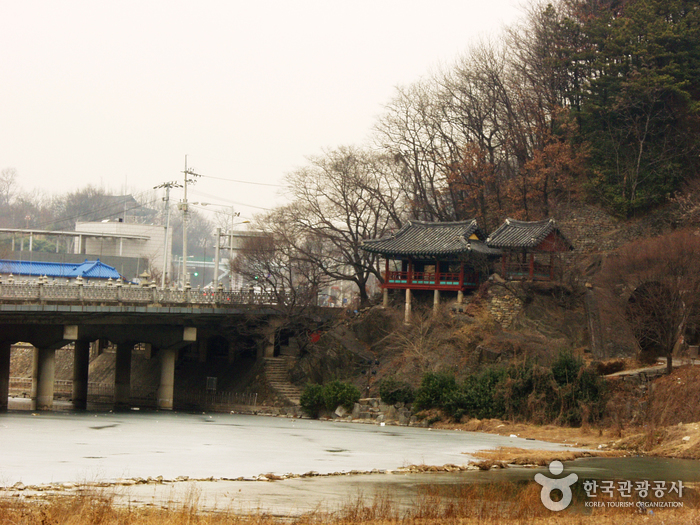
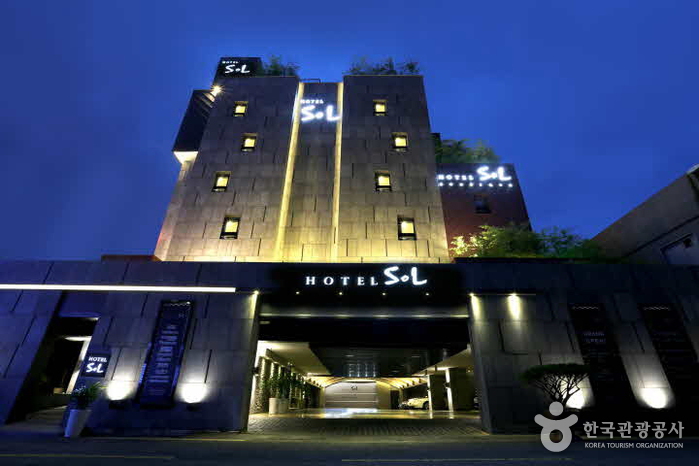
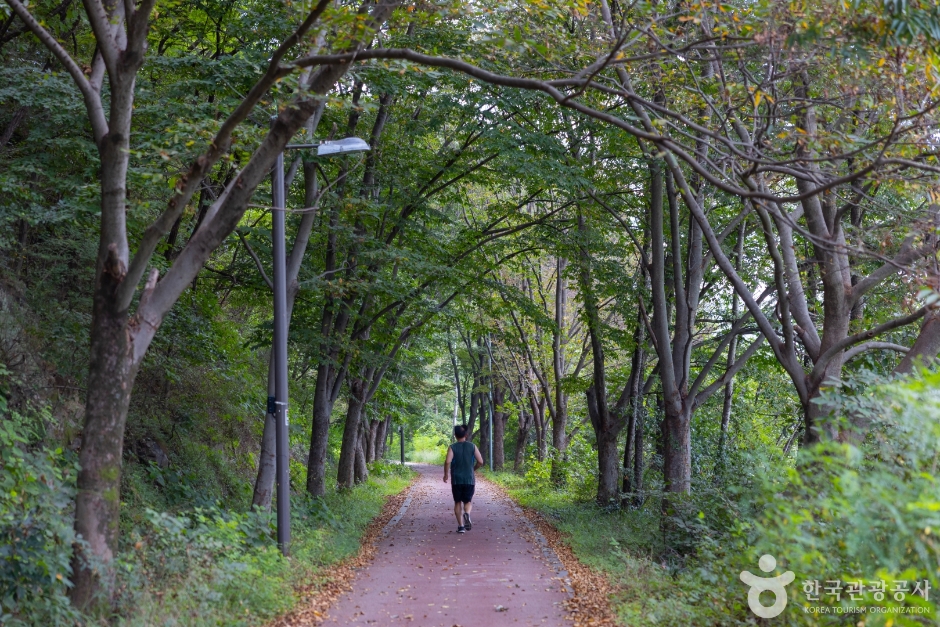
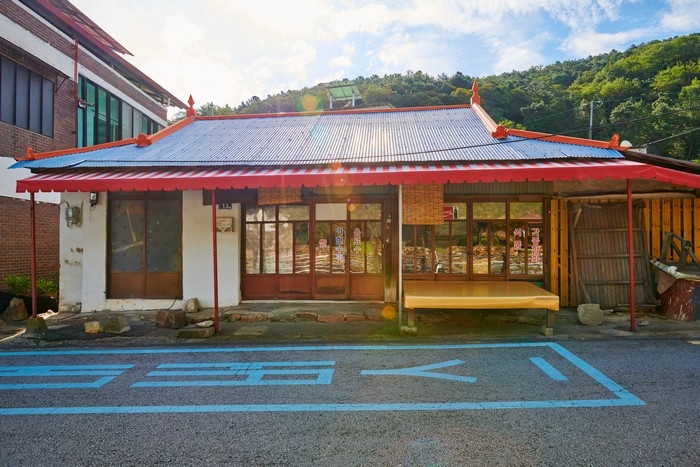

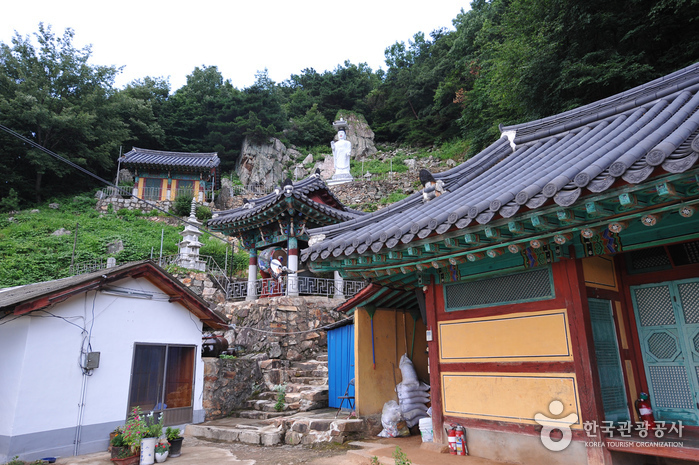
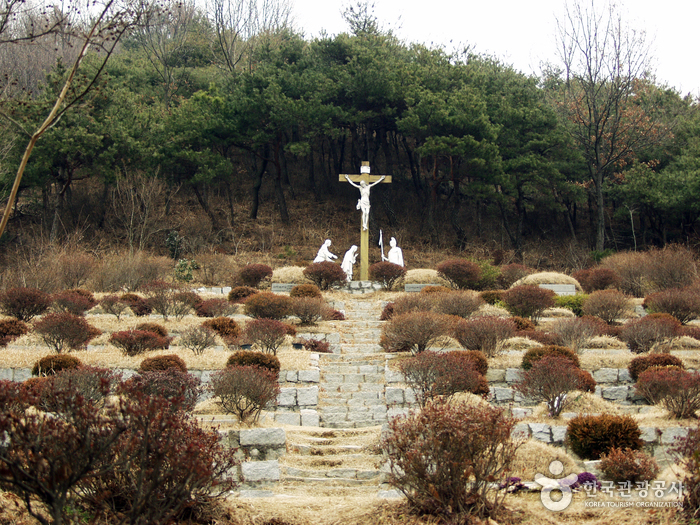
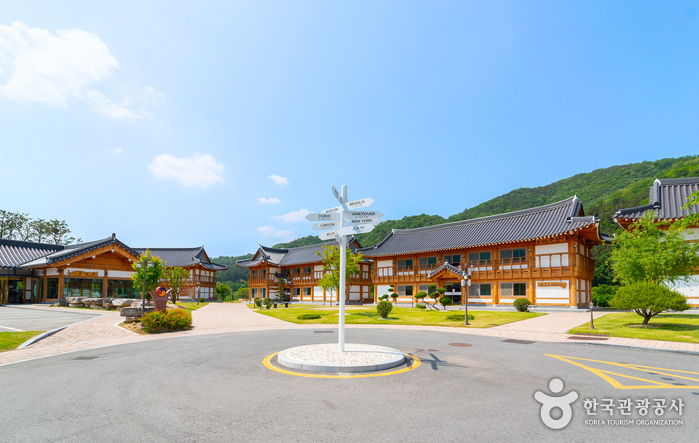
 Français
Français
 한국어
한국어 English
English 日本語
日本語 中文(简体)
中文(简体) Deutsch
Deutsch Español
Español Русский
Русский